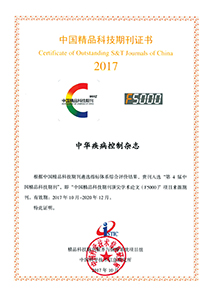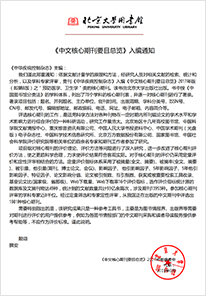2017 Vol. 21, No. 1
Display Method:
2017, 21(1): 3-7.
doi: 10.16462/j.cnki.zhjbkz.2017.01.001
Abstract:
2017, 21(1): 8-12.
doi: 10.16462/j.cnki.zhjbkz.2017.01.002
Abstract:
2017, 21(1): 13-18.
doi: 10.16462/j.cnki.zhjbkz.2017.01.003
Abstract:
2017, 21(1): 19-21,34.
doi: 10.16462/j.cnki.zhjbkz.2017.01.004
Abstract:
2017, 21(1): 22-25.
doi: 10.16462/j.cnki.zhjbkz.2017.01.005
Abstract:
2017, 21(1): 26-29.
doi: 10.16462/j.cnki.zhjbkz.2017.01.006
Abstract:
2017, 21(1): 30-34.
doi: 10.16462/j.cnki.zhjbkz.2017.01.007
Abstract:
2017, 21(1): 35-39.
doi: 10.16462/j.cnki.zhjbkz.2017.01.008
Abstract:
2017, 21(1): 40-43,47.
doi: 10.16462/j.cnki.zhjbkz.2017.01.009
Abstract:
2017, 21(1): 44-47.
doi: 10.16462/j.cnki.zhjbkz.2017.01.010
Abstract:
2017, 21(1): 52-55.
doi: 10.16462/j.cnki.zhjbkz.2017.01.012
Abstract:
2017, 21(1): 56-60.
doi: 10.16462/j.cnki.zhjbkz.2017.01.013
Abstract:
2017, 21(1): 61-64,76.
doi: 10.16462/j.cnki.zhjbkz.2017.01.014
Abstract:
2017, 21(1): 65-68.
doi: 10.16462/j.cnki.zhjbkz.2017.01.015
Abstract:
2017, 21(1): 69-71,88.
doi: 10.16462/j.cnki.zhjbkz.2017.01.016
Abstract:
2017, 21(1): 72-76.
doi: 10.16462/j.cnki.zhjbkz.2017.01.017
Abstract:
Analysis on mortality and years of life lost due to gastric cancer in urban and rural area of Xiamen
2017, 21(1): 77-79,98.
doi: 10.16462/j.cnki.zhjbkz.2017.01.018
Abstract:
2017, 21(1): 80-83.
doi: 10.16462/j.cnki.zhjbkz.2017.01.019
Abstract:
2017, 21(1): 84-88.
doi: 10.16462/j.cnki.zhjbkz.2017.01.020
Abstract:
2017, 21(1): 89-93.
doi: 10.16462/j.cnki.zhjbkz.2017.01.021
Abstract:
2017, 21(1): 94-98.
doi: 10.16462/j.cnki.zhjbkz.2017.01.022
Abstract:
2017, 21(1): 99-101,106.
doi: 10.16462/j.cnki.zhjbkz.2017.01.023
Abstract:
2017, 21(1): 102-104.
doi: 10.16462/j.cnki.zhjbkz.2017.01.024
Abstract:
2017, 21(1): 105-106.
doi: 10.16462/j.cnki.zhjbkz.2017.01.025
Abstract:


 Email alert
Email alert RSS
RSS Abstract
Abstract PDF
PDF





